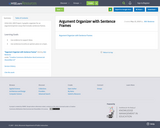
CESA #1EL OER Project: A graphic organizer for an argument/opinion essay that includes sentences frames.
- Subject:
- Education
- English Language Arts
- Material Type:
- Activity/Lab
- Homework/Assignment
- Date Added:
- 05/15/2018

CESA #1EL OER Project: A graphic organizer for an argument/opinion essay that includes sentences frames.
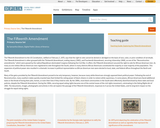
This collection uses primary sources to explore the Fifteenth Amendment. Digital Public Library of America Primary Source Sets are designed to help students develop their critical thinking skills and draw diverse material from libraries, archives, and museums across the United States. Each set includes an overview, ten to fifteen primary sources, links to related resources, and a teaching guide. These sets were created and reviewed by the teachers on the DPLA's Education Advisory Committee.
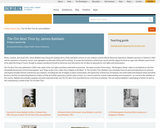
This collection uses primary sources to explore The Fire Next Time by James Baldwin. Digital Public Library of America Primary Source Sets are designed to help students develop their critical thinking skills and draw diverse material from libraries, archives, and museums across the United States. Each set includes an overview, ten to fifteen primary sources, links to related resources, and a teaching guide. These sets were created and reviewed by the teachers on the DPLA's Education Advisory Committee.
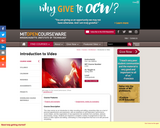
Introduction to video editing and interface devices. Explores video as an environmental, editorial and narrative form. Looks at issues of interpretation, meaning, expression and how they relate to historical, social, and cultural issues.
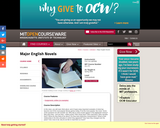
" In this class, you will read, think about, and (I hope) enjoy important examples of what has become one of the most popular literary genres today, if not the most popular: the novel. Some of the questions we will consider are: Why did so many novels appear in the eighteenth century? Why were theyŰÓand are theyŰÓcalled novels? Who wrote them? Who read them? Who narrates them? What are they likely to be about? Do they have distinctive characteristics? What is their relationship to the time and place in which they appeared? How have they changed over the years? And, most of all, why do we like to read them so much?"
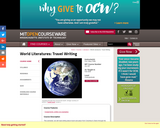
"This semester, we will read writing about travel and place from Columbus's Diario through the present. Travel writing has some special features that will shape both the content and the work for this subject: reflecting the point of view, narrative choices, and style of individuals, it also responds to the pressures of a real world only marginally under their control. Whether the traveler is a curious tourist, the leader of a national expedition, or a starving, half-naked survivor, the encounter with place shapes what travel writing can be. Accordingly, we will pay attention not only to narrative texts but to maps, objects, archives, and facts of various kinds. Our materials are organized around three regions: North America, Africa and the Atlantic world, the Arctic and Antarctic. The historical scope of these readings will allow us to know something not only about the experiences and writing strategies of individual travelers, but about the progressive integration of these regions into global economic, political, and knowledge systems. Whether we are looking at the production of an Inuit film for global audiences, or the mapping of a route across the North American continent by water, these materials do more than simply record or narrate experiences and territories: they also participate in shaping the world and what it means to us. Authors will include Olaudah Equiano, Caryl Philips, Claude L?vi-Strauss, Joseph Conrad, Jamaica Kincaid, William Least Heat Moon, Louise Erdrich, ?lvar N
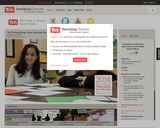
The video helps students turn an essay prompt into an introduction for an essay through the use of manipulatives.
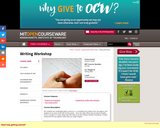
MIT students are challenged daily to solve for x, to complete four problem sets, two papers, and prepare for an exam worth 30% of their grade... all in one night. When they do stop to breathe, it's for a shower or a meal. What does this have to do with creative writing? Everything. Creative writing and MIT go together better than you might imagine.
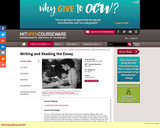
Exploration of formal and informal modes of writing nonfiction prose. Extensive practice in composition, revision, and editing. Reading in the literature of the essay from the Renaissance to the present, with an emphasis on modern writers. Classes alternate between discussion of published readings and workshops on student work. Individual conferences. This is a course focused on the literary genre of the essay, that wide-ranging, elastic, and currently very popular form that attracts not only nonfiction writers but also fiction writers, poets, scientists, physicians, and others to write in the form, and readers of every stripe to read it. Some say we are living in era in which the essay is enjoying a renaissance; certainly essays, both short and long, are at present easier to get published than are short stories or novels, and essays are featured regularly and prominently in the mainstream press (both magazines and newspapers) and on the New York Times bestseller books list. But the essay has a history, too, a long one, which goes back at least to the sixteenth-century French writer Montaigne, generally considered the progenitor of the form. It will be our task, and I hope our pleasure, to investigate the possibilities of the essay together this semester, both by reading and by writing.
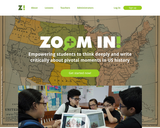
Zoom In provides 18 guided lessons on historical events where students focus on reading primary and secondary documents closely, gathering evidence, and writing an argumentative or explanatory essay. Throughout the process students are asked to do the following:
Read documents closely and criticallyIdentify author's point of view and purposeEngage in higher-order, text-based discussionsWrite explanatory and argumentative essays grounded in evidence